Punchy Pirates by Piece of Five is a cooperative action party game in which players control a pirate crew. The game is aimed at casual gamers who prefer fast, entertaining, and beginner-friendly games.
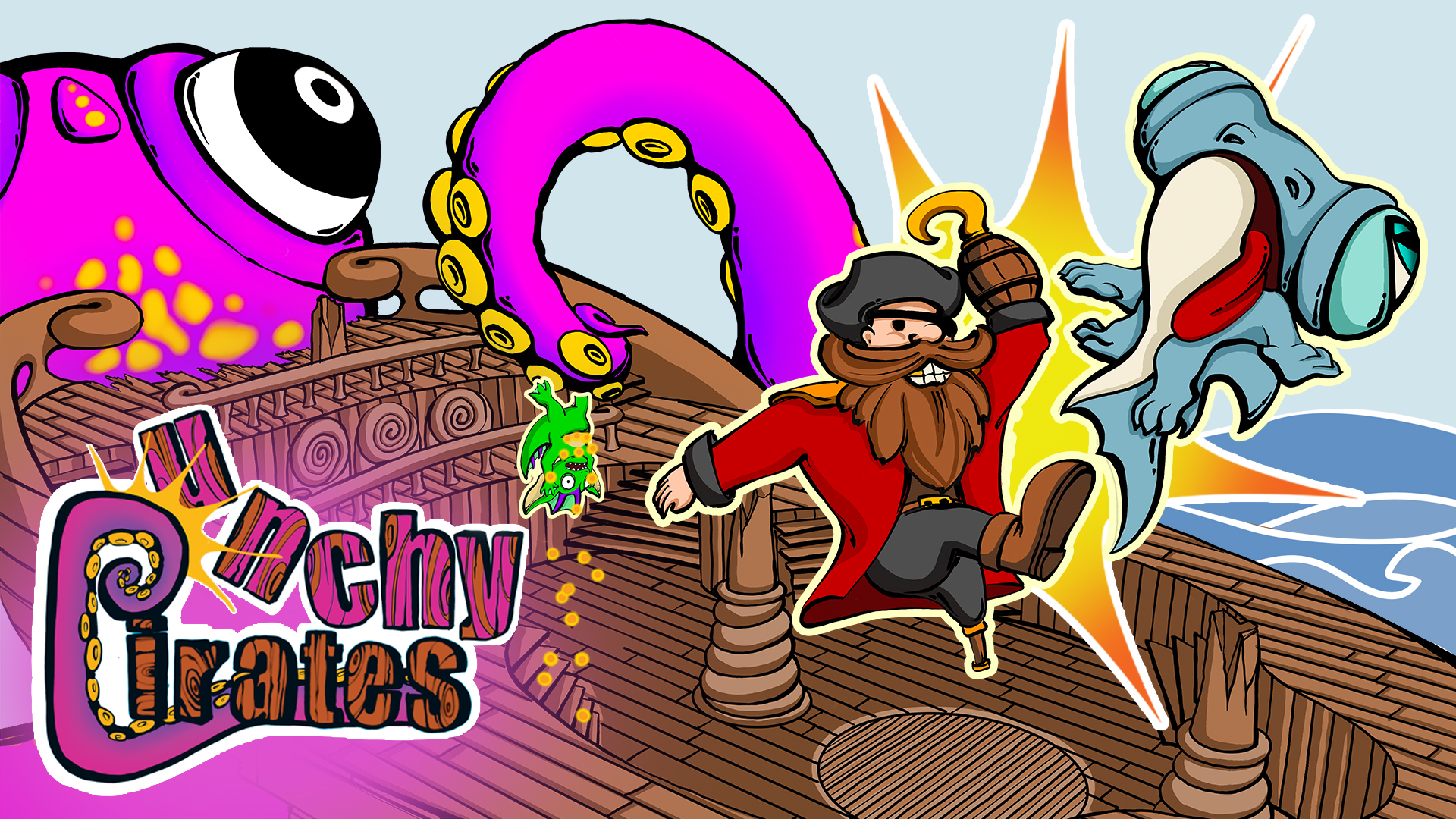
¶ Key Facts
| Name | Punchy Pirates |
|---|---|
| Platforms | PC (Gamepad Support) |
| Genre | Party, Co-op, Action |
| Target Audience |
Multiplayer Enthusiasts Friends and Families Casual Gamers |
| Engine | Unity Engine 3D |
| Perspective | Top down isometric |
| USP | Kraken living inside the Ship |
| Other selling points |
Cooperative Chaotic Fun Accessible Replayable Family Friendly |
| Developer | Piece of Five |
¶ Summary
Punchy Pirates by Piece of Five is a cooperative action party game in which players control a pirate crew sailing from island to island in order to grow their treasure hoard. The game is aimed at casual gamers who prefer fast, entertaining, and beginner-friendly games, as well as families with children who want to have fun together.
¶ Team
¶ Core
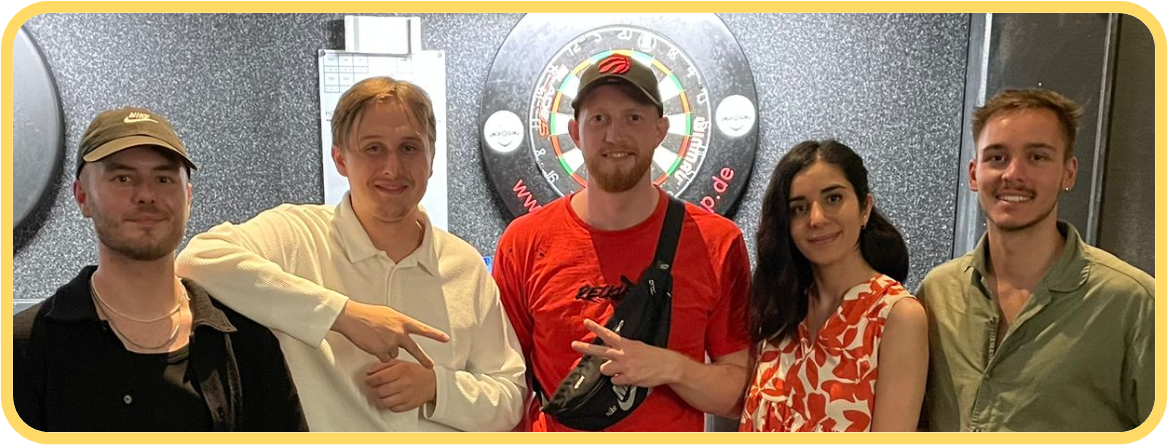
In order of appearance: Mark, Dima, Soran, Leila and Jonas
| Mark Arnemann - 2758587 |
Dmitrij Berg - 2758529 |
Soran Heße - 2646916 |
|||
| Programmer | Programmer | 3D Artist | |||
| Game Designer | Scrum Master | ||||
| Leila Karamitalab - 2772002 |
Jonas Mack - 2516314 |
||||
| 2D/3D Artist | Programmer | ||||
| Audio Programming | |||||
¶ External
Both for audio & sound design.
- Anna Kulikova
- Danny Frommer
¶ Gameplay
¶ Short Description
In Punchy Pirates a crew of players has to defend their ship and a big pile of gold in the middle of its deck. Enter a chaotic pirate frenzy with gameplay that takes inspiration from Overcooked and Ship of Fools.
Players get to choose their own course across a procedurally generated map of islands. More difficult routes have higher rewards but afford greater skill or preparation.
While sailing, players have to defend their ship and gold against different enemy types for the duration of the round while collecting gold along the way. A round starts after selecting an island and concludes after an island has been reached. Once at the island, players are able to spend their gold on upgrades or to repair their ship.
¶ Ship and Resources
Inside of our ship lives an octopus, it helps players back on the ship, if they fall off. Also it starts and slows down the ship, when a round starts or ends.
On the ship deck, players find some barrels with unlimited wood in them. These are necessary to fix holes, Brutes will punch into the ship.
Besides the wood, there is a gold pile, located in the center of the ship. This is what players need to defend. Enemies will run up on the ship, during a round and try to steal the gold. Players have to knock enemies from board, to protect the gold.
Any gold found along the way can be spent on upgrades to the ship's health or repairs.
¶ The Map
The map is randomly generated for each round, using a generation seed. Islands spawn on the map, holding one of four rewards: Health, Upgrade, Gold or ?. Players can only lock their route to an island. The map is made out of hexagonal tiles, indicating that players are allowed to move horizontally, vertically and diagonally. This design also indicates that players are allowed to go backwards on the map. The Difficulty of the round is set by the length of the route players choose on the map table. Players are able to go directly to the goal island, but will probably sink their ship before arriving.
It's also possible to visit an island again. Players can choose, if they want to have two smaller and easier routes, by stopping by the already visited island. Or they go directly and have a difficult round. Players can drive to an island they have already been to, but the treasure the island holds can only be selected once.
¶ Code
¶ Multiplayer
Playing alone is fun, but Punchy Pirates was made for multiple players, playing together. This is why we started to implement remote multiplayer using Photon Fusion 2. Once we had the core systems in for remote multiplayer, we experienced that the development progress slowed down too heavily, which is why we stuck our focus to local multiplayer for this vertical slice.
Now up to four players can play in one session, locally. We decided to leave remote multiplayer out for this demo, but on the other hand, we are able to add remote multiplayer if we want to. Just with the right amount of time to work on.
¶ Character Controller
¶ Goal
For our game it is paramount that our character controls cause as little friction as possible.This is why I set friction to 0.09.
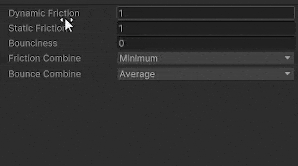
Well… of course things are not that simple, although that friction value is genuinely set to this low. Why?
¶ The real shape of our players
Our scrappy pirates are, in truth, pretty smooth guys.
Their collision and movement is wholly determined by a simple capsule!
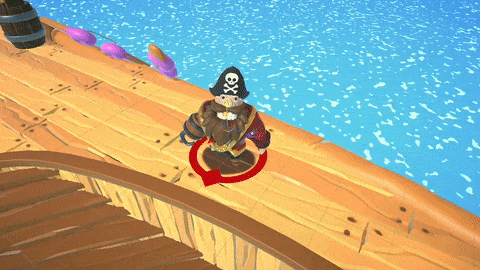
This capsule has its rotation frozen in all axes, thus it accumulates a lot of friction when rubbing against any walls or even the ground.
Getting stuck on every corner doesn’t feel that good so we (mostly)* handle deceleration of the players via drag instead.
*We do increase the friction whenever players let go of controls to try and keep the characters stationary when intended.
¶ What drives our movement
All movement in the game is based on the physics engine of Unity.
While this added some challenges in development, it enabled lots of fun and intricate ways to make the character controller more deep - without sacrificing ease of access.
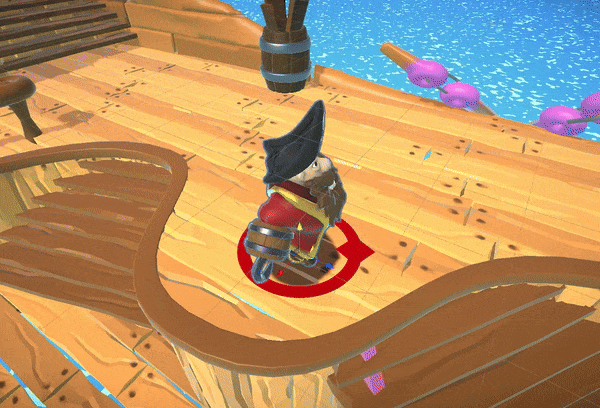
|
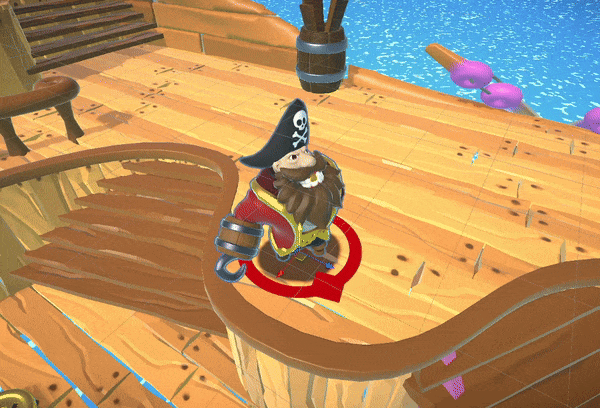
|
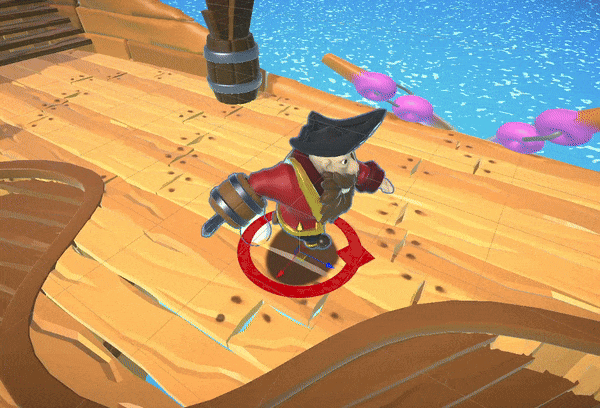
|
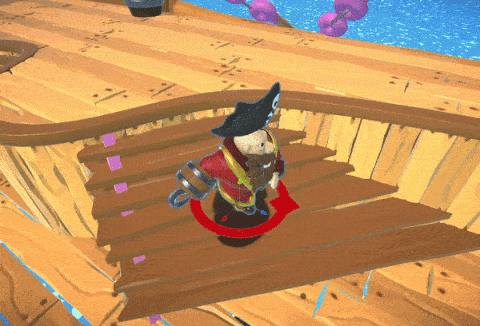
|
Simple planar movement that feels snappy, but has just a bit of interesting sliding to it.
Jumps that have forgiving buffers, coyote time and extra air time with longer button presses.
Similar movement behavior around (in terms of physics) extreme slopes and satisfying falling curves.
Wonderfully smooth behavior around corners & seams.
All of this seems very intuitive and straight-forward when you play. But the dynamics of every core movement mechanic had to be designed with care and this took lots of work.
¶ Itty-bitty details
To go further beyond, here are some of the more interesting interactions of movement mechanics.
These are all intended and sometimes have been born from fun play patterns we saw during playtests!
|
You can bounce on your friends' heads! 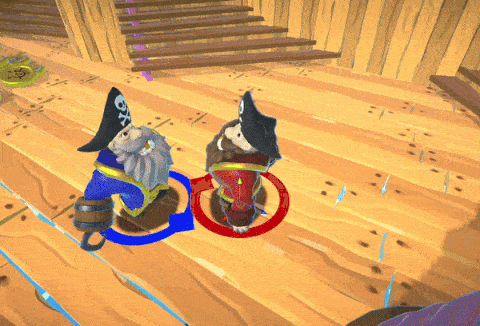
|
Players can throw planks to quickly give those to other players 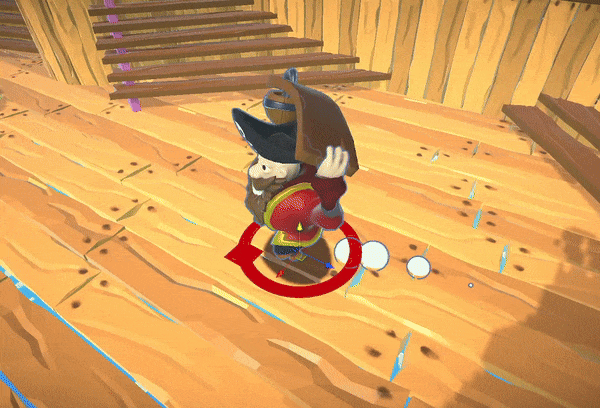
|
|
Since we let people throw planks around 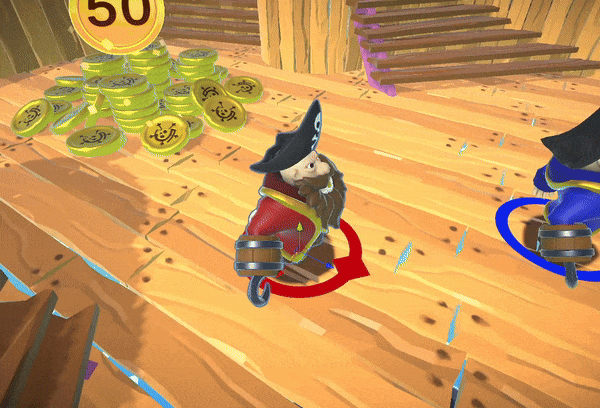
|
You can kick your buddies! 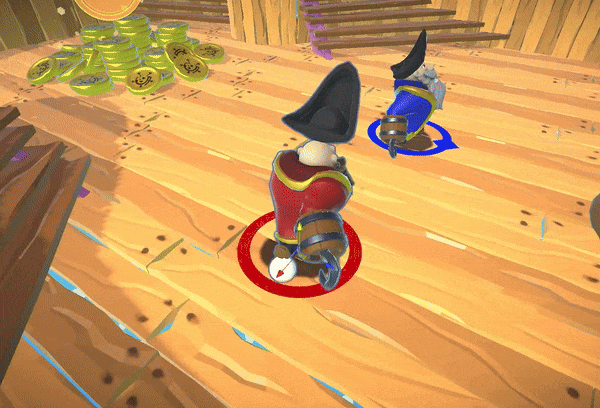
|
|
Now it’s getting interesting. Our game has what is commonly called “movement tech”. 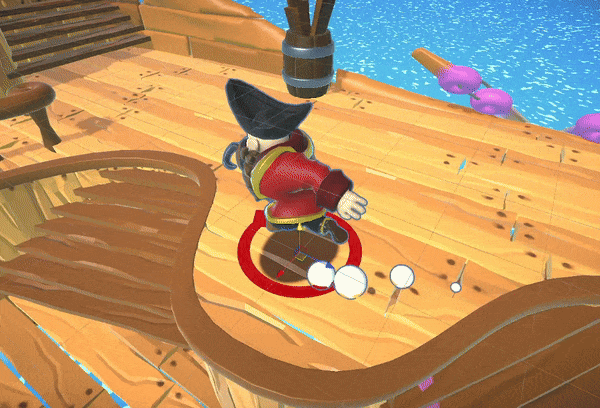
|
You can mix up the timing of the inputs for different results. 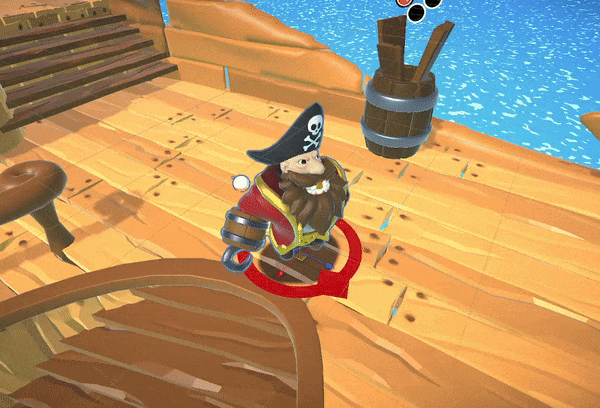
|
And finally, with some practice, you can chain some jumps to displace your charged kick even further!
Lots of cool stuff that players can uncover at their own pace,
since the advanced tech is not required to play - but helps push the boundaries of what appears to be an otherwise simple character controller.
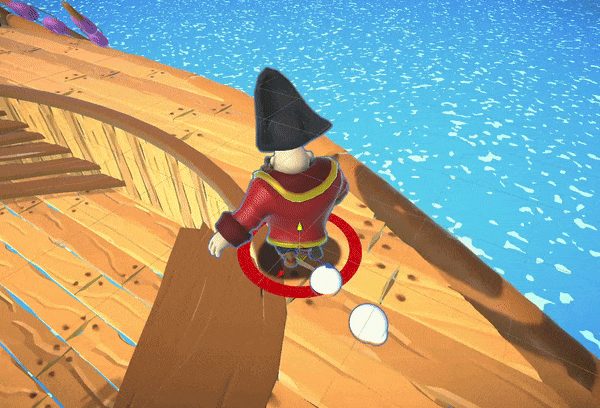
¶ Enemy Behaviors
Enemy behaviors were programmed using a behavior tree architecture. This allowed modular creation of specific behavior nodes such as “MoveToTarget”, “JumpOffShip” or “CollectGold. Once the specific nodes were created, programming the behavior for an enemy was fast, debugging was easy and changes to it were easy to make.
¶ Art
¶ Goal
For Punchy Pirates we chose a cartoony and colorful artstyle that isn’t taking itself too seriously, to match the fast paced, joyful, chaotic gameplay.
¶ Characters
For the characters we chose a “Cute but Vicious” approach, that fits the pirate theme with the greed for gold, but manages to stay family friendly.
¶ Playable Character
Initially we planned to have different character models for the playable characters, representing different personalities within the crew.
But due to time constraints we only ended up with the captain of the crew, who wears different primary and secondary colors, so the players don't lose track of their own character.
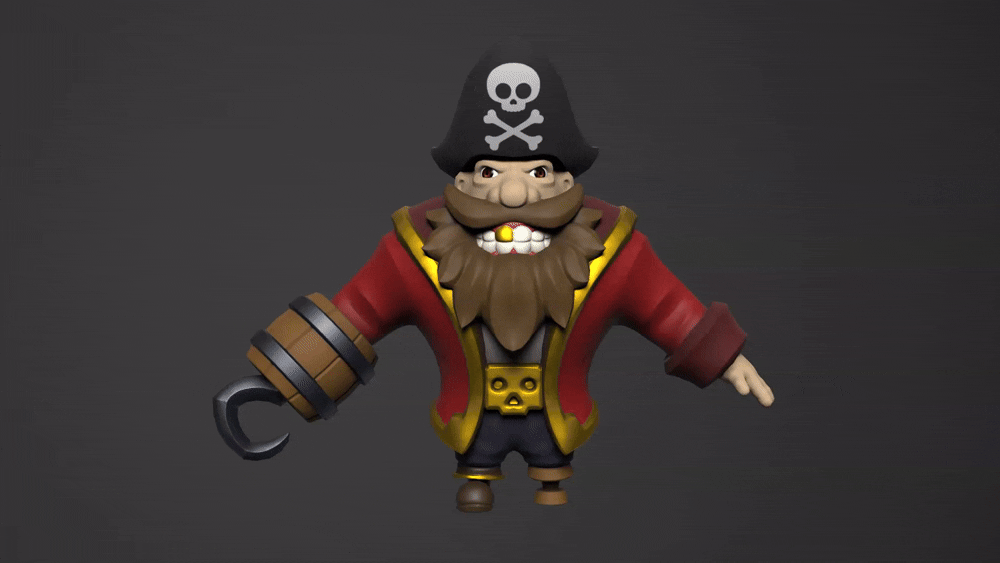
¶ Enemies
We planned to have at least two enemy types.
One that steals gold (Looter) and one that punches holes into the ship (Brute). Later on we added a third enemy type, that tries to punch the players off the ship (Puncher).
The creatures were planned to work for different enemy types, so we could use the brute model with different colorways for the puncher enemy. Since the enemies spawn out of the water, we made sure they look like sea creatures.
¶ Hammerheads
The Hammerhead is a creature that mixes up a hammerhead shark with a quadruped animal.
The strong emphasis on the head shows its main “tool” to punch holes into the ship or players off the ship.
By giving them legs, we made sure they could freely navigate on the ship, which enabled us to use them for different enemy types.
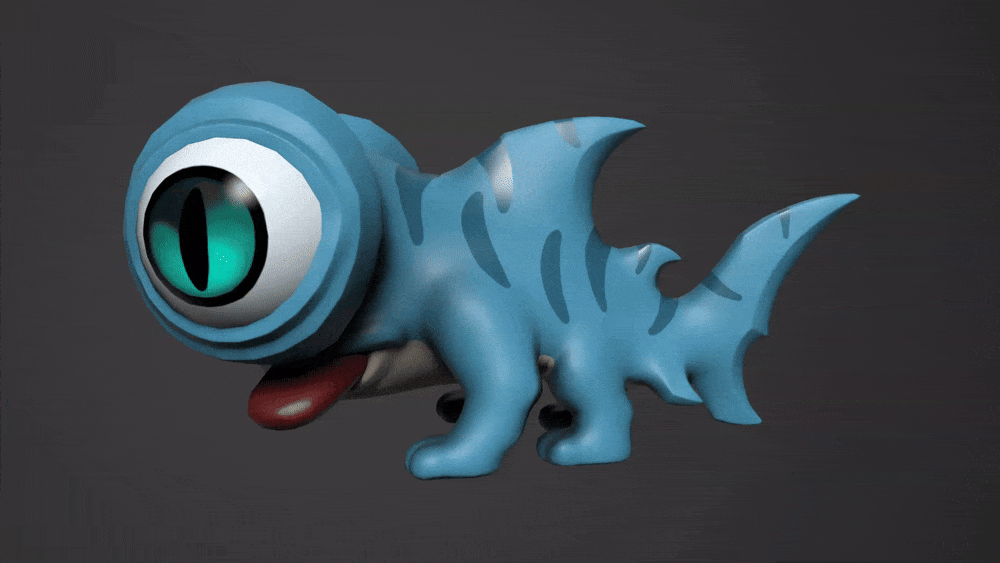
¶ Fishlins
The Fishlin is a Goblin mixed up with fishlike features to make them look like sea creatures.
They have a big pouch on their belly, which they can use to transport stolen gold.
The pouch could also be used for different things, like throwable objects, we could have used for additional enemy types.
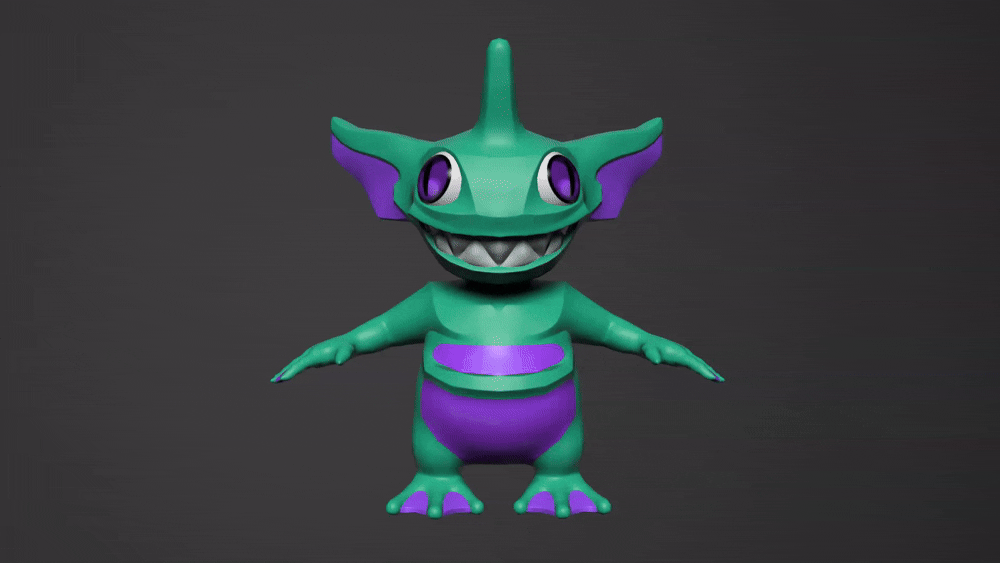
¶ Character Workflow
The final models for all Characters followed the same Workflow, as seen on the example of the Hammerhead.
¶ Concept, Modelling & Texturing
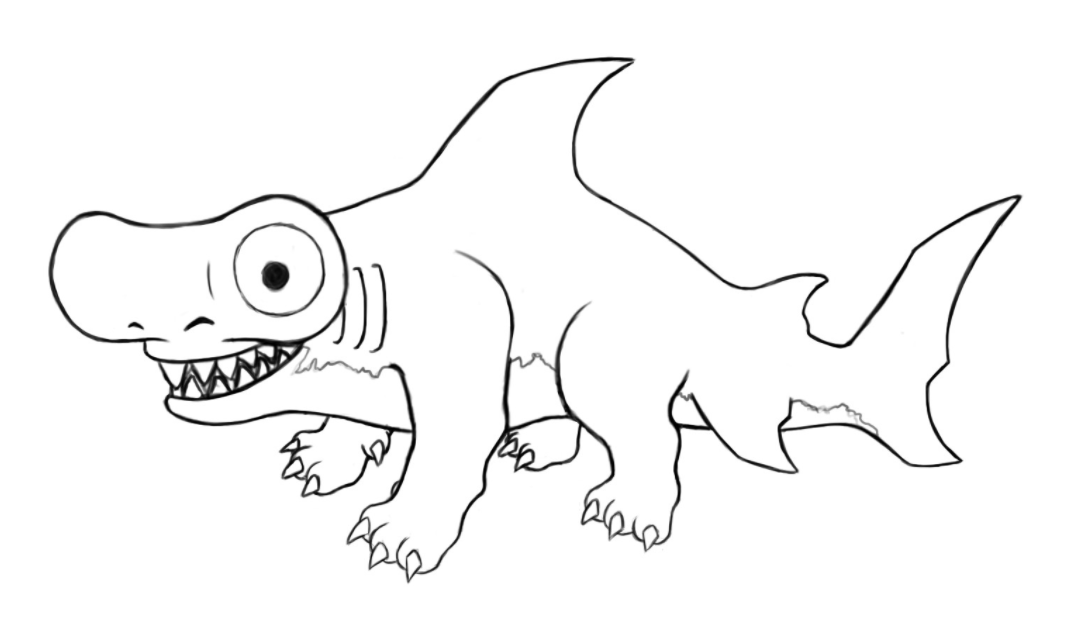
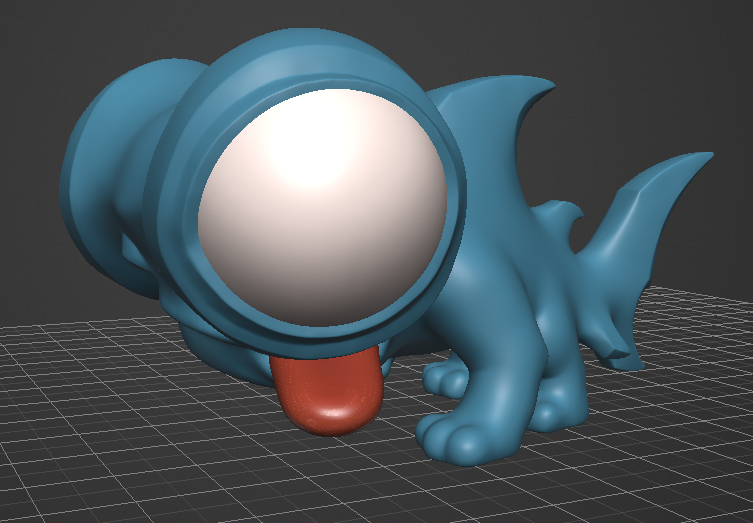
|
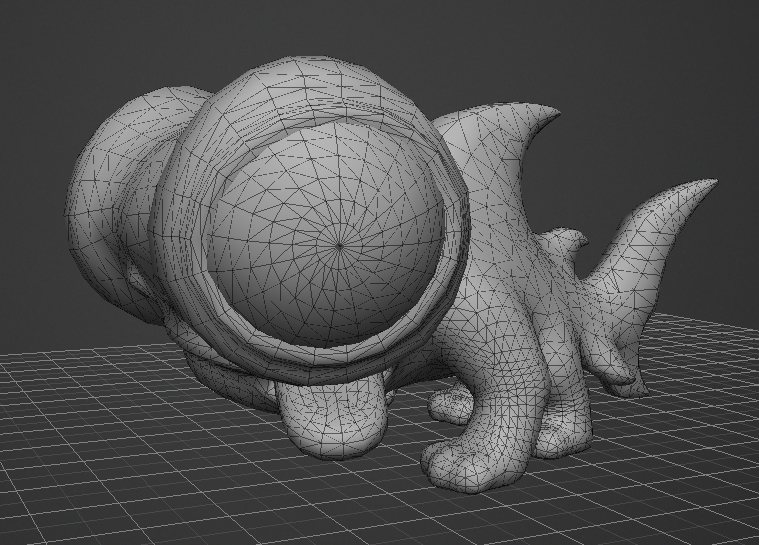
|
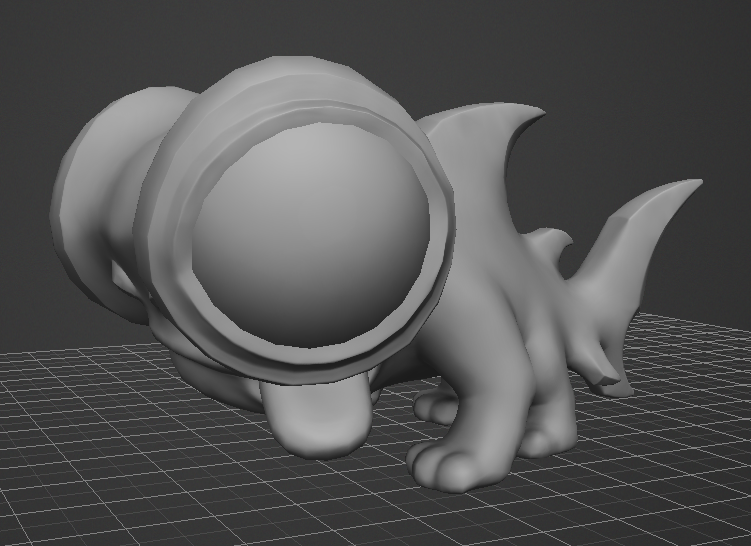
|
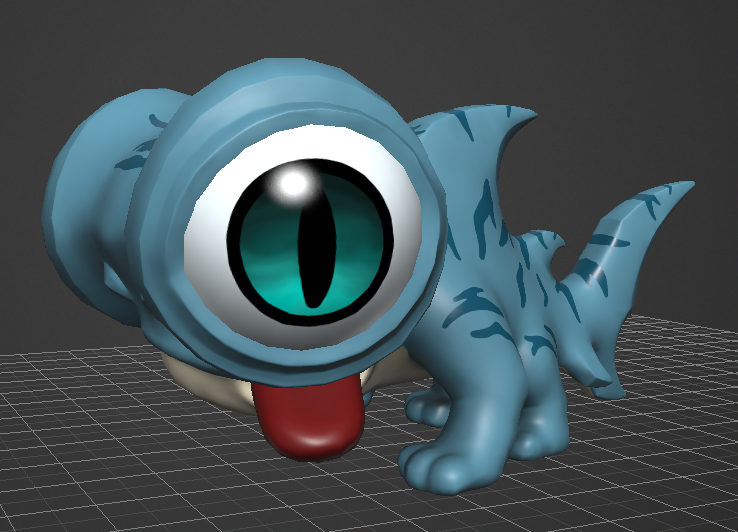
|
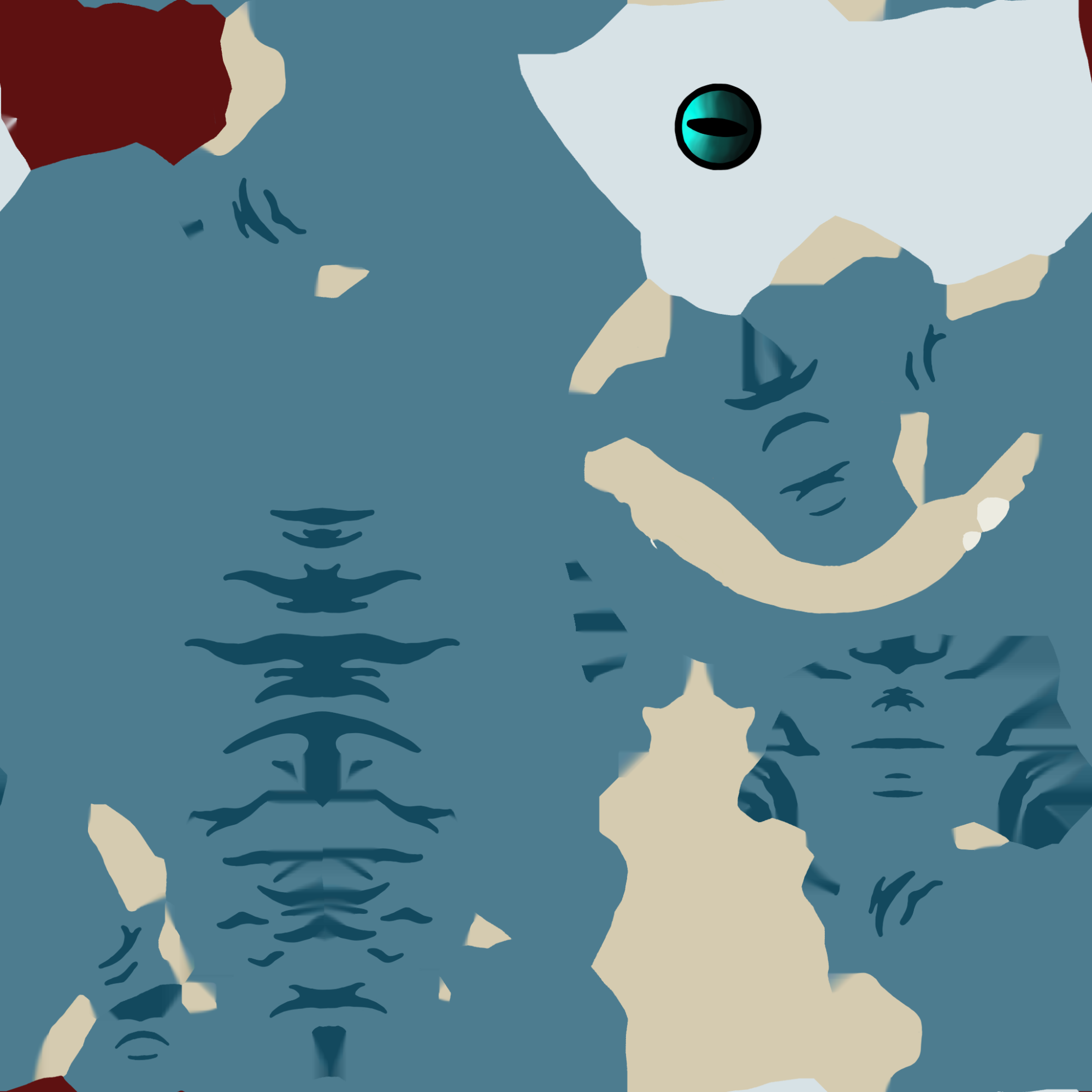
|
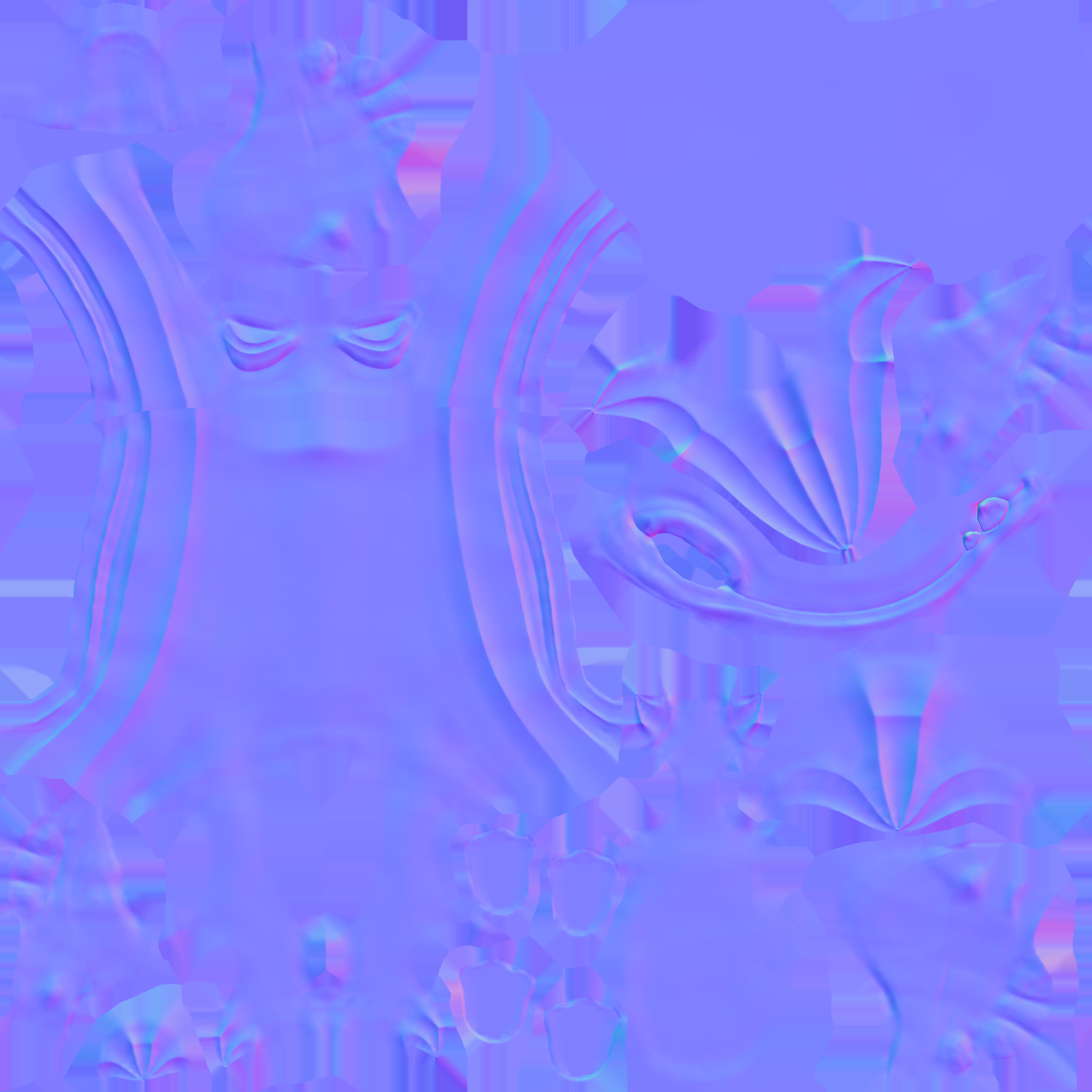
|
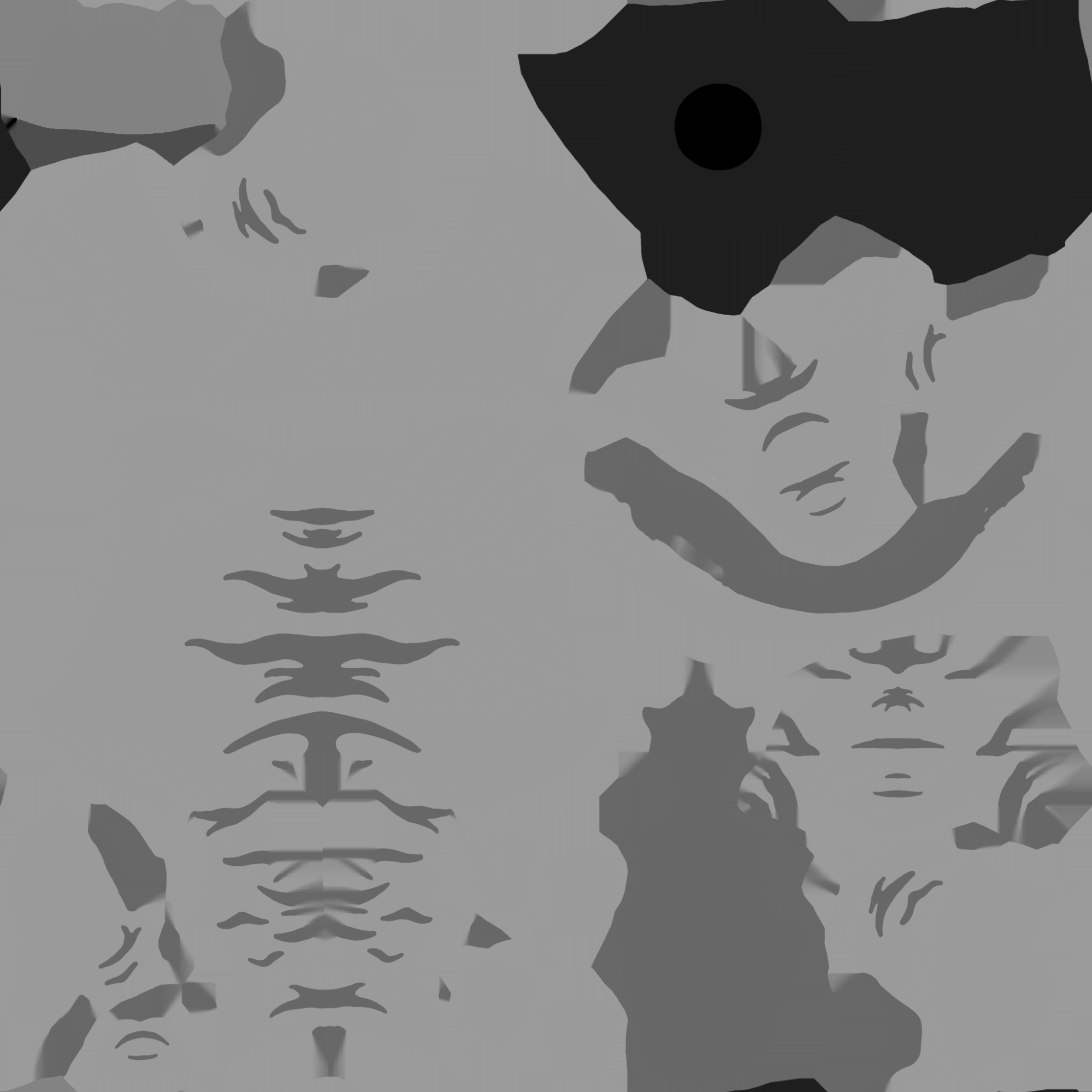
|
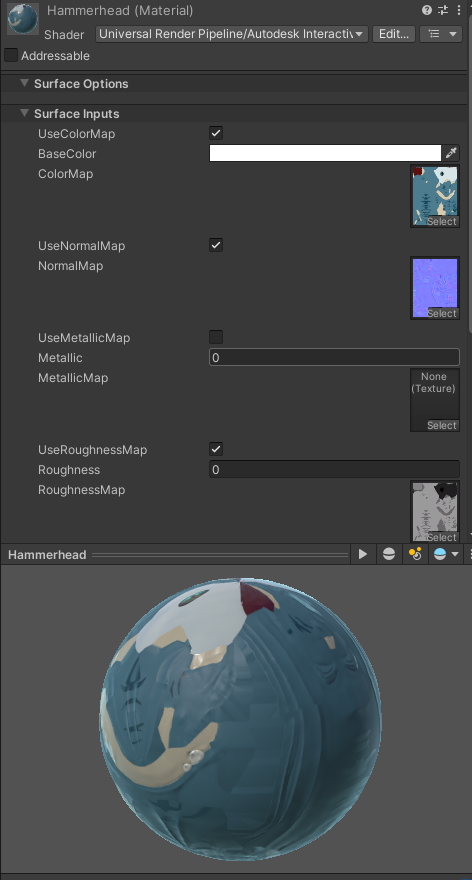
¶ Animations
We went for a super cartoony and exaggerated animation style, to fit the joyful, humorous fast paced gameplay.
But also to make the actions of the characters as readable as possible, since they are quite small on the screen and in high numbers.
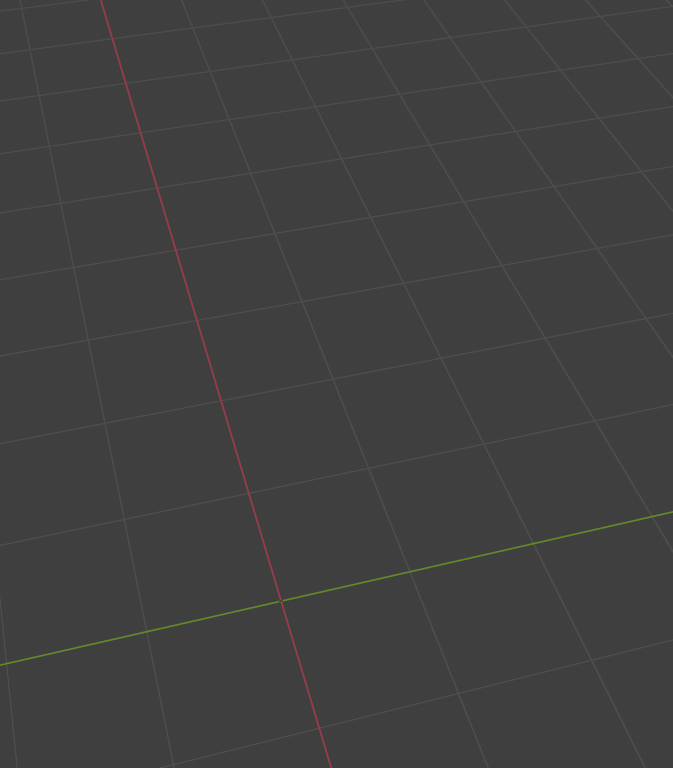
|
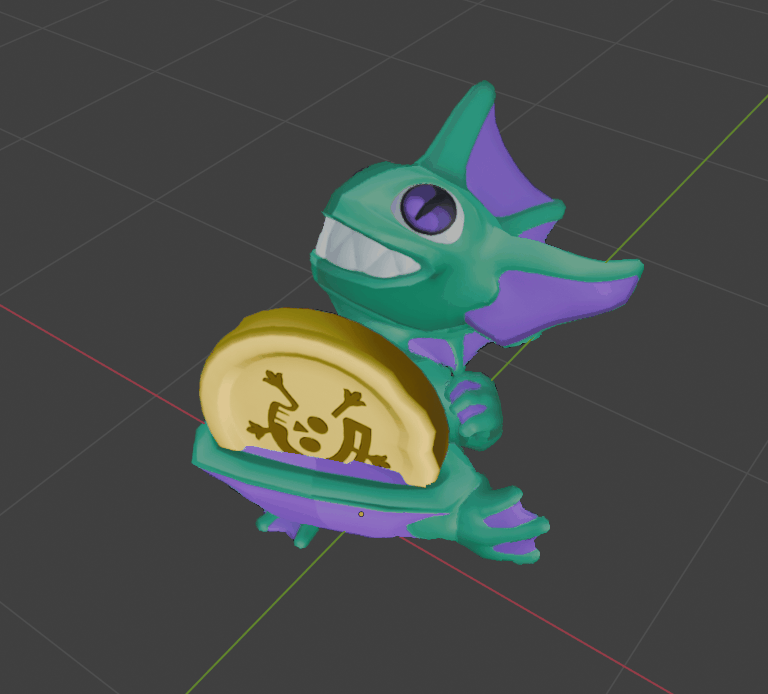
|
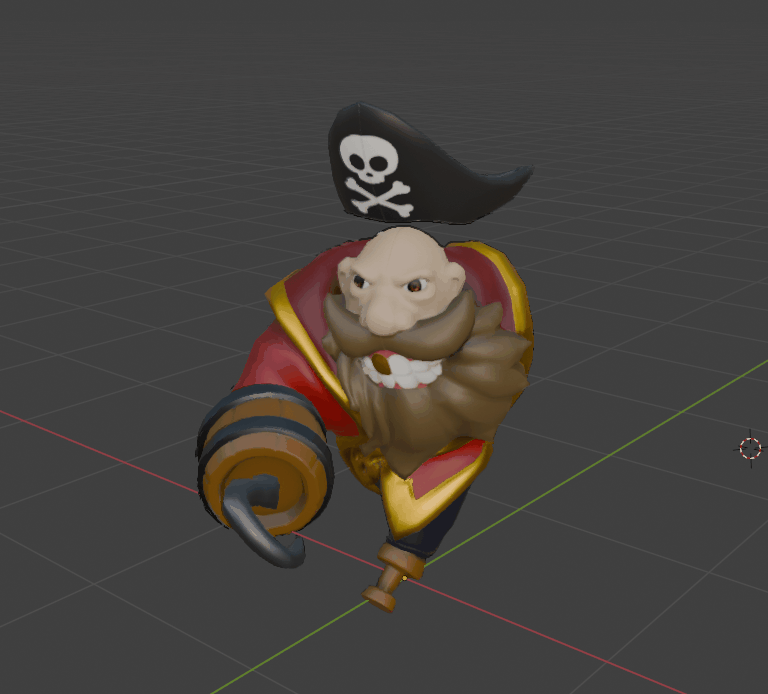
|
¶ Environment
¶ The Ship
Our goal for the environment design was to stay consistent with the character art style, but with slightly less saturated colors.
This way, the characters stand out more clearly during gameplay.
Initially, we planned to design a classic wooden ship.
To quickly iterate, we created modular ship parts that could be combined and once the level design was finalized, be replaced by a fully handmade model.
During this process, the concept evolved: we introduced a kraken with a central role in the game’s story. To reflect this, the ship became a broken vessel seemingly controlled by the kraken, with its tentacles integrated into the design.
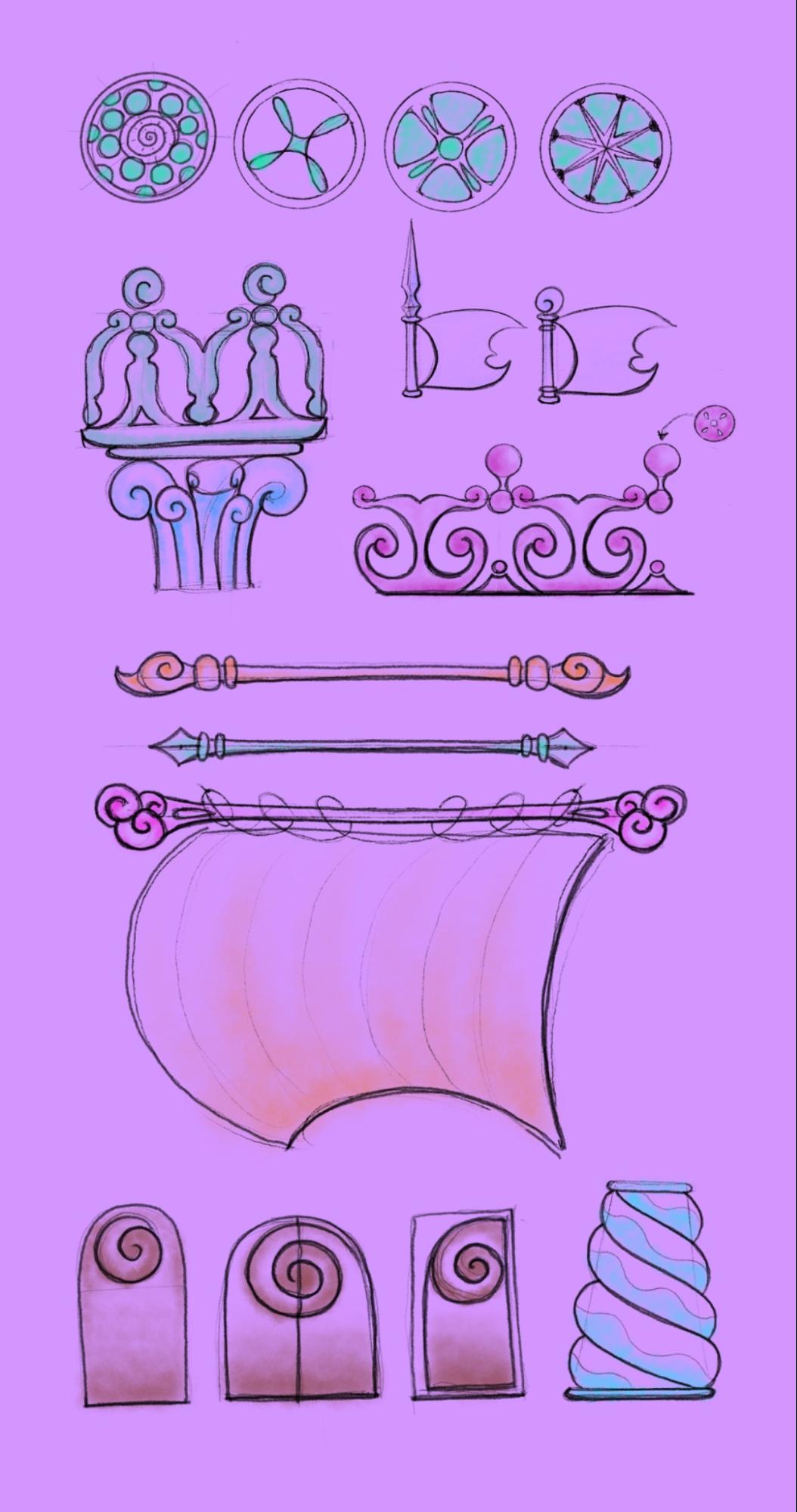
|
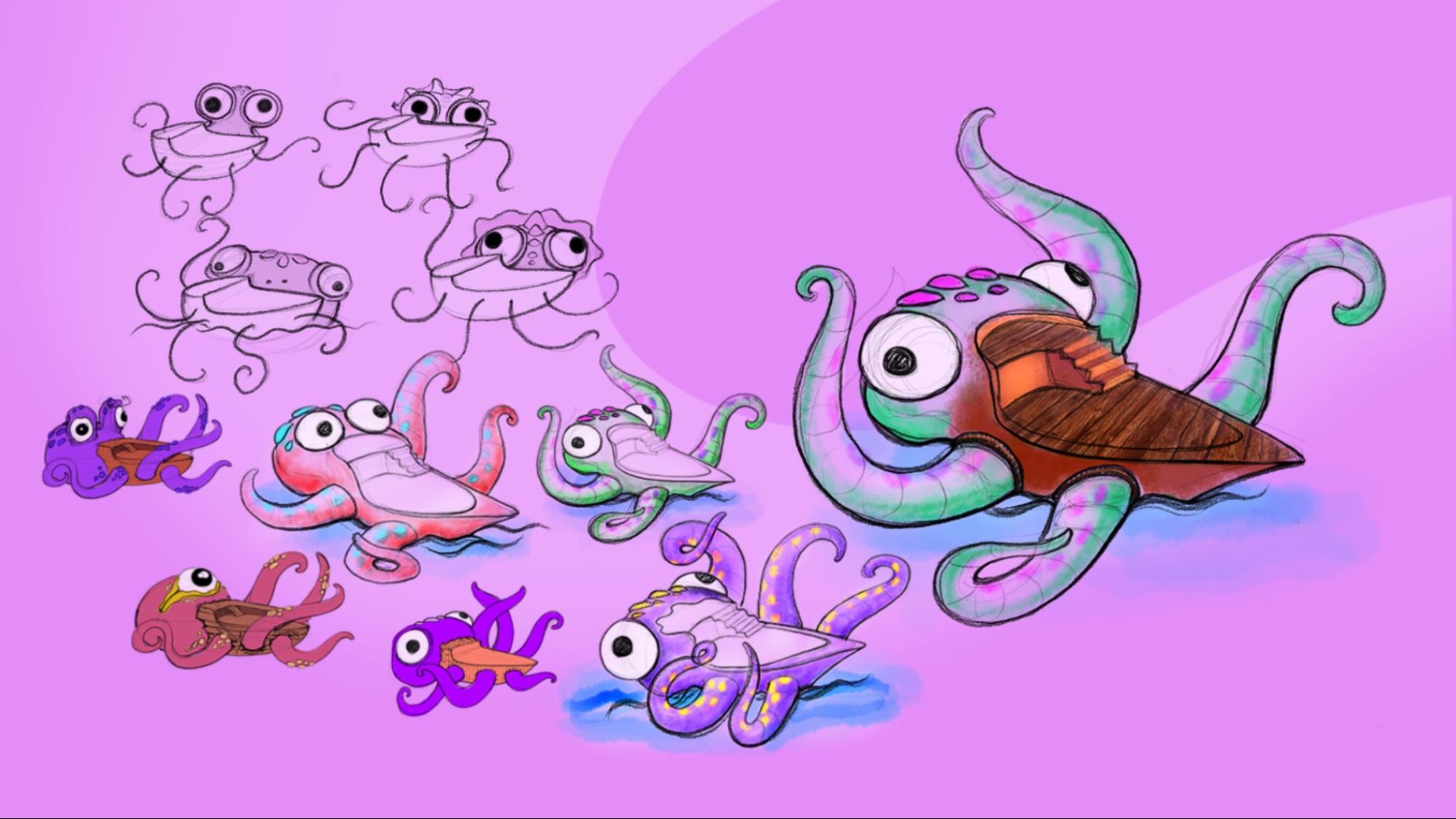
|
The kraken’s visual style was kept consistent with the characters—cute, cartoony, and colorful.
To strengthen both the story and the game’s atmosphere, we gave the kraken animations that make it feel like an active, friendly companion.
For example, the kraken follows players across the deck with its eyes, reacts to ship damage, tosses players back onto the ship when they fall into the ocean, and moves its tentacles to help the ship sail or stop.
¶ UI Design
Since the game’s main scenes are already visually busy, our approach to UI design was to keep elements as simple and informative as possible while still retaining a playful, colorful style.
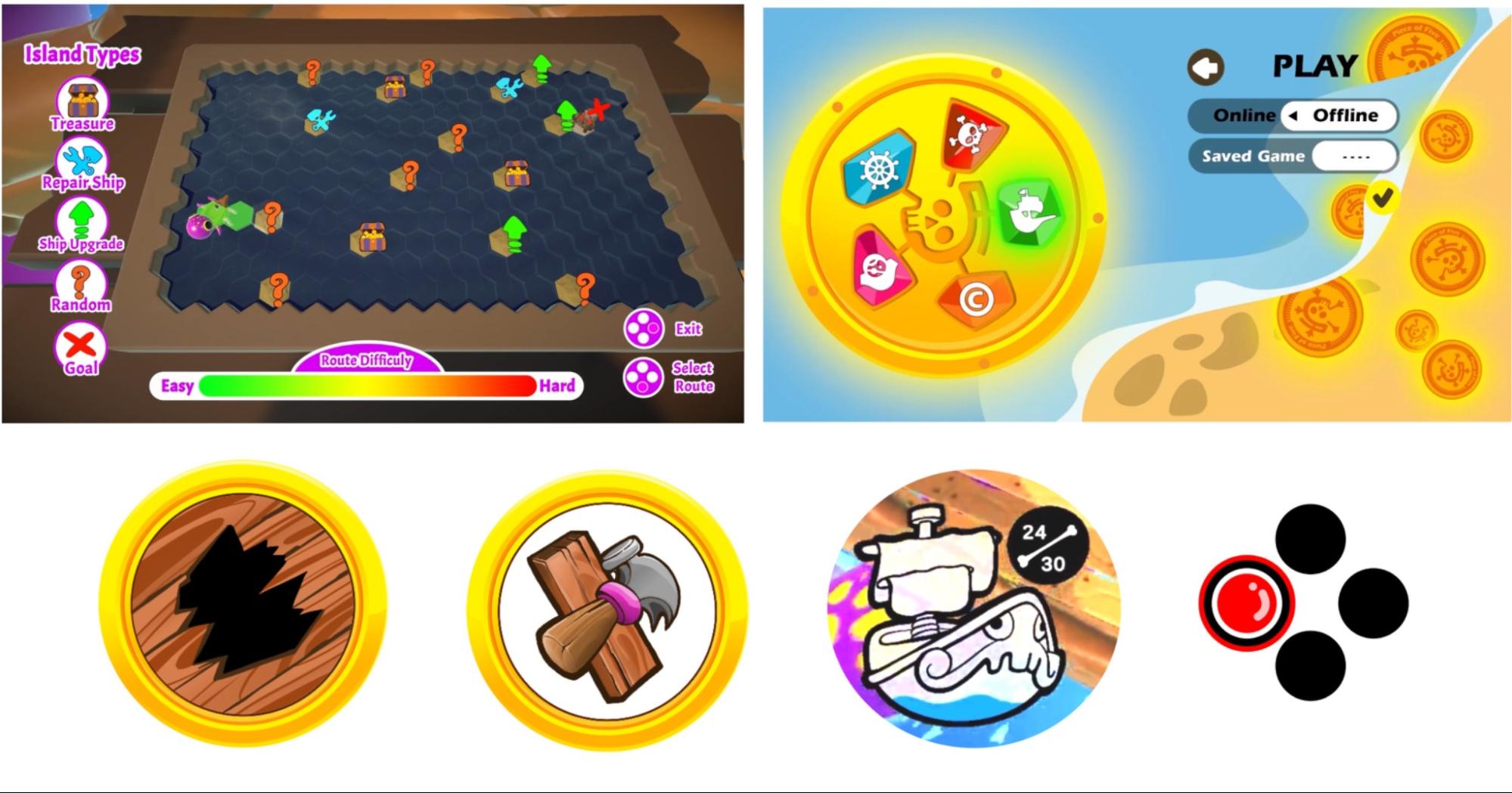
Menu screens follow a cartoony, vibrant theme, while in-game UI integrates the kraken as a companion figure.
This ensures that players constantly feel the presence of the cute purple kraken—whether through icons, menu elements, or feedback cues—reinforcing its role as a helpful and friendly guide throughout the game.
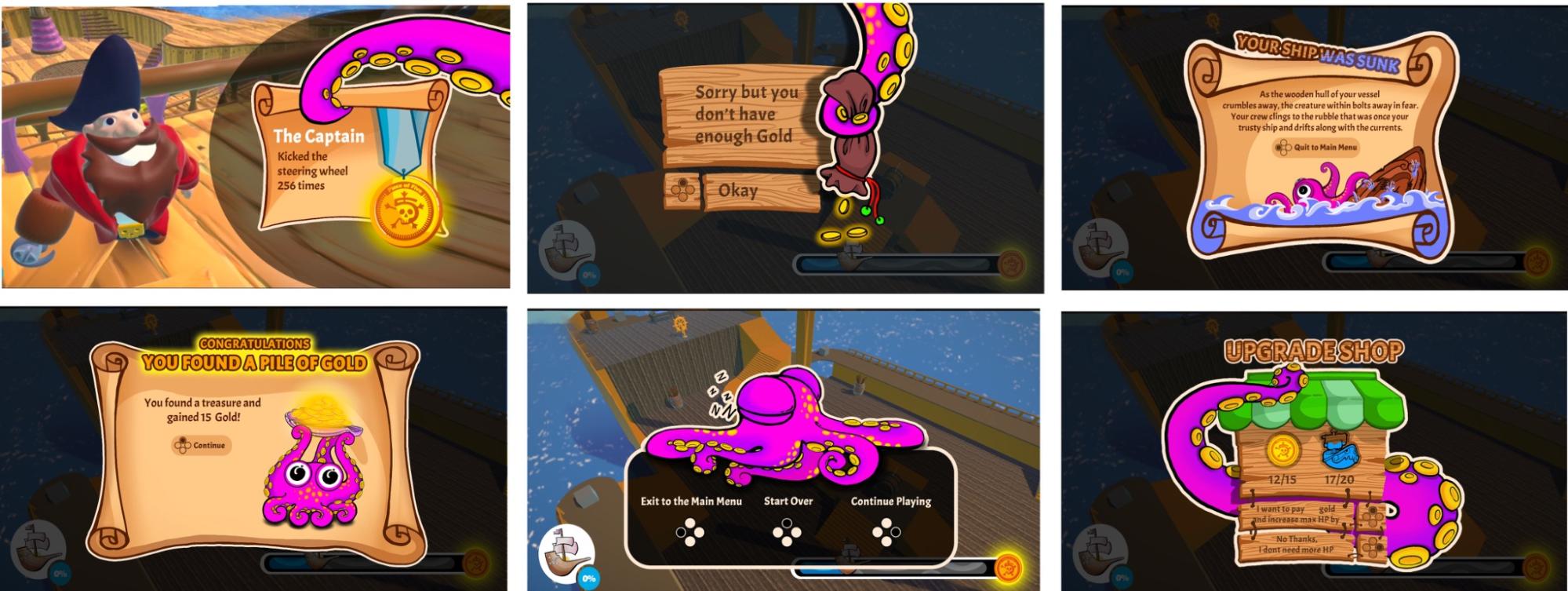
¶ Audio
¶ Goals
The audio aims to enhance the game's playful and cartoonish nature by delivering light, exaggerated sounds that complement the pirate theme.
Non-diegetic sounds like score tallies and victory fanfares add to the light-hearted feel. The goal is to immerse players in the fun, dynamic environment while ensuring audio cues are clear and engaging in a multiplayer setting.
¶ Sound Effects (SFX)
Movement Sounds: Footsteps, jumping and landing sounds
Character Voices: Cartoonish, exaggerated pirate accents for comedic effect. Short voiceover lines for key events (e.g., “Ahoy!” or "Arr!" when interacting with objects).
Interaction Sounds: Item pickups, attacks, interactions
Enemy Sounds: Stealing gold, creating holes, whimsical vocalizations
Ambient Sounds: Constant ocean waves, seagulls, Creaking planks and distant wind to create a lively seafaring atmosphere.
¶ Music
Between Rounds: Light, upbeat pirate-themed orchestral music with playful melodies.
During Rounds: Fast-paced, more intense but still upbeat and playful pirate-themed orchestral music.
¶ Adaptive Audio
- Increasing wind and waves when starting a round
- Switching between battle music to idle music when round starts and ends
- Randomized pitch on often occurring sounds like jumping to prevent them from getting bothersome
- Random selection of sounds out of multiple sounds for often occurring sounds like footsteps
¶ Technical Implementation
Audio Middleware: FMOD was used for dynamic audio control and spatial audio.
3D Audio: Real-time spatialization for accurate sound placement.